Christmas In London
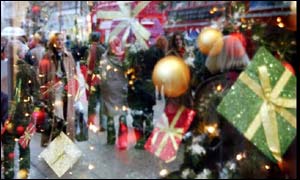
As winter descends upon London, seasonal spirit simply sweeps the streets. Come the end of November red-cheeked shoppers and carol singers fill the streets. To celebrate, London will be overcome by a welcome array of festive activities and fun. You can sample a great British tradition and catch a classic pantomime or hit the West End and take in a show. Christmas classics like The Nutcracker and The Snowman will once again be lighting up the London stage.
There are lots of traditional treats on offer too - grab a set of skates and glide across one of the many outdoor ice rinks, gather around the Christmas tree in Trafalgar Square and sing carols. Don't forget London is one of the best places in the world for shopping. You can find gifts for all - stocking fillers, boys' toys and plenty of girlie gifts. Christmas is also an atmospheric time for sightseeing too - take in the landmarks of London on foot, by coach, or from a boat on the Thames.
www.astraltravels.co.uk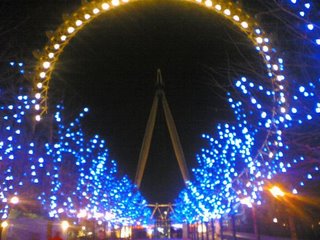
It's nice to have a base from which to make the most of our festive capital. Why not book yourself into a hotel? Please click on the link below for a number of hotels in London.
http://www.astraltravels.co.uk/uk-london-tours/london_discount_hotels.htmWith carols ringing out from the churches and the sweet smell of roasted chestnuts floating in the air, London is one of the most magical places on Earth for festive fun.
Happy Christmas to everyone in London
Hogmanay
There is only one place to cele brate the New Year in Europe and that’s at the “home” of New Years Eve - Edinburgh. “Hogmanay” as it is known locally, has always been much more than an excuse to have a party for the Scots. It is more of a national festival that has to been see to be believed. Edinburgh annually hosts the biggest New Years Eve party in Europe - and this year it is going to be massive!
brate the New Year in Europe and that’s at the “home” of New Years Eve - Edinburgh. “Hogmanay” as it is known locally, has always been much more than an excuse to have a party for the Scots. It is more of a national festival that has to been see to be believed. Edinburgh annually hosts the biggest New Years Eve party in Europe - and this year it is going to be massive!
Edinburgh's Hogmany is a four day free for all celebrating the new year. Visitors enjoy 4 days of fabulous events throughout the city including well loved favourites such as the Torchlight Procession and the world famous Royal Bank Street Party, as well as many new events.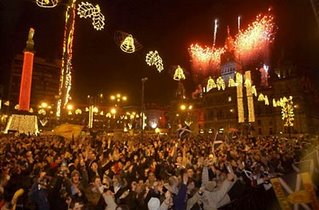
What is Hogmanay?
Hogmanay is the Scots word for the last day of the year and is synonymous with the celebration of the New Year in the Scottish manner. Its official date is the 31 December. However this is normally only the start of a celebration which lasts through the night until the morning of the 1 January or, in many cases, 2 January.Hogmanay is celebrated on New Year's Eve, every year, usually in a most exuberant fashion in Scotland as hundreds of thousands of revellers take to the streets to see in the New Year. Celebrations start in the early evening and reach a crescendo by midnight. Minutes before the start of new year, a lone piper plays, then the bells of Big Ben chime at the turn of midnight, lots of kissing, and everyone sings Auld Lang Syne. And then there is more kissing. Elsewhere in Scotland, particularly in more remote parts, customary first footing and Scottish dances, or ceilidhs (pronounced "kayli"), take place. For centuries, fire ceremonies -- torch light processions, fireball swinging and lighting of New Year fires -- played an important part in the Hogmanay celebrations. And they still do.
What are the origins of Hogmanay? 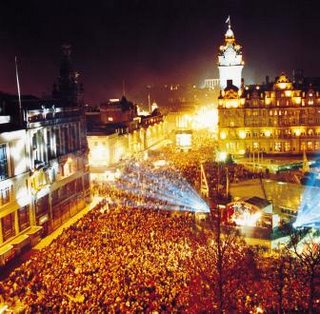
Hogmanay's roots reach back to the pagan practice of sun and fire worship in the deep mid-Winter. This evolved into the ancient Saturnalia, a great Roman Winter festival, where people celebrated completely free of restraint and inhibition. The Vikings celebrated Yule, which became the twelve days of christmas, or the "Daft Days" as they became known in Scotland. The Winter festival went underground with the Reformation and ensuing years, but re-emerged at the end of the 17th Century. Since then the customs have continued to evolve to the modern day. It is only in recent years that Hogmanay has been celebrated on such a large scale: the first event of its kind was at "Summit in the City" in 1992 when Edinburgh hosted the European Union Heads of State conference. Edinburgh's Hogmanay festival was so successful that it spawned similar events throughout Scotland for last year's millennium festivities. This year the big three Scottish Ne'er celebrations are Edinburgh's Hogmanay, Glasgow's Hogmanay and Stirling's Hogmanay.
What is the symbolism of fire at Hogmanay?
The flame and fire at Hogmanay symbolises many things. The bringing of the light of knowledge from one year to the next, lighting the way into the next uncharted century, putting behind you the darkness past, but carrying forward its sacred flame of hope and enlightenment to a better parish, and in this day, world.
What is First Footing? Traditionally, it has been held that your new year will be a prosperous one if, at the strike of midnight, a "tall, dark stranger" appears at your door with a lump of coal for the fire, or a cake or coin. In exchange, you offered him food, wine or a wee dram of whisky, or the traditional Het Pint, which is a combination of ale, nutmeg and whisky. It's been sugggested that the fear associated with blond strangers arose from the memory of blond-haired Viking’s raping and pillaging Scotland circa 4th to 12th centuries. What's more likely to happen these days is that groups of friends or family get together and do a tour of each others' houses. Each year, a household takes it in turn to provide a meal for the group. In many parts of Scotland gifts or "Hogmananys" are exchanged after the turn of midnight.
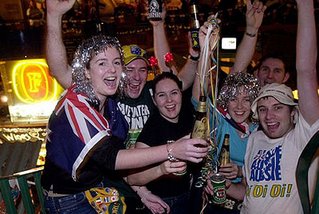 Where is the biggest Hogmanay street party?
Where is the biggest Hogmanay street party?
Edinburgh and Glasgow both have street parties for 100,000 people. This is even though the capital is less populated than Glasgow, around 450,000 compared to 750,00 people. However, although last year 100,000 tickets were distributed for the Edinburgh Hogmanay street party, a lot more people found their way in. The biggest Hogmanay street party in Scotland to date was an estimated 300,000 at Edinburgh's Hogmanay in 1996/97 (so they say). It was too many, people were crushed, and it consequently became a ticketed event.
What are the words to Auld Lang's Syne? The words that many of us join hands and sing at the strike of midnight are written in old Scots, the language commonly spoken in Scotland until 1707 when Scotland's Parliament dissolved itself and was merged with England. The words were adapted by Rabbie Burns, Scotland's National poet, from a traditional poem.
Take a deep breath now:
Should auld acquaintance be forgot, And never brought to mind? Should auld acquaintance be forgot, And auld lang syne?
For auld lang syne, my dear, For auld lang syne, We'll tak a cup o'kindness yet For auld lang syne!
If Hogmanay takes your fancy check our tours available at:http://www.backpackertours.co.uk/britain_uk_england_tours/edinburgh-hogmanay-tour.htmAt: www.backpackertours.co.uk
The New 7 Wonders of the World!!!
We all know about the 7 wonders of the world…… but now there the NEW 7 Wonders of the world.
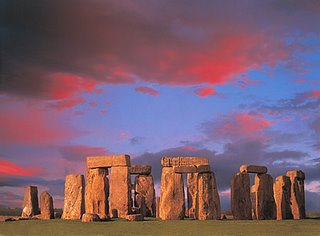
Swiss adventurer Bernard Weber created the “New7Wonders Foundation” in 2001, with a mission to protect humankind's heritage across the globe. He has set up a website and narrowed down all of the world spectacles to a short list of 18!
The commonly known Seven Ancient Wonders of the World were all man-made monuments, selected by Philon of Byzantium in 200 B.C. Today, only the Pyramids of Giza in Egypt remain.His selection of wonders was essentially a travel guide for fellow Athenians, and the stunning sites were all located around the Mediterranean basin, the then-known world.
The monuments he chose, to be remembered in perpetuity, were:
The Lighthouse of Alexandria
The Temple of Artemis
The Statue of Zeus
The Colossus of Rhodes
The Hanging Gardens of Babylon
The Mausoleum of Halicarnassus
The Pyramids of Egypt
All had been built between 2,500 B.C. and 200 B.C. Now, just as Pierre de Coubertin revived the Olympic Games in 1896 with his modern version of the competition, New7Wonders founder Bernard Weber is seeking to revive the concept of the 7 Wonders of the World with this ambitious global campaign, the New 7 Wonders of the World.
The key difference is that, this time around, they will not be chosen by one man, but rather by millions of people all over the world. The new wonders that are selected will be the people’s choices, and they will be drawn from the earliest time that humankind walked upon the earth up through the year 2000. It is, therefore, possible that the only survivor of the original 7 Wonders of the World, the Pyramids at Giza, could be chosen for a second time, taking them well into a third millenium of fame!
The short list of 7 Wonders of the World are as follows:
q The Great Wall of China – China 
q The Acropolis of Athens – Athens, Greece
q Alhambra – Granada, Spain
q Angkor – Cambodia
q The Pyramid at Chichén Itza – Yucatan Peninsula, Mexico
q Christ Redeemer – Rio De Janeiro, Brazil
q The Roman Colosseum – Rome, Italy
q The Eiffel Tower – Paris, France
q The Hagia Sophia – Istanbul, Turkey
q Kiyomizu Temple – Kyoto, Japan
q The Kremlin and Red Square – Moscow, Russia
q Machu Picchu – Peru
q Petra – Jordan
q The Pyramids of Giza – Egypt
q The Statue of Liberty – New York, U.S.A
q Stonehenge – Amesbury U.K (OUR FAVOURITE!!!)
q Sydney Opera House – Sydney, Australia
q The Taj Mahal – Agra, India
Get voting for what you think should be the new seven wonders of the world at :
http://www.new7wonders.com/
Autumn
Autumn is here (also known as fall) itÂs one of the four seasons, the period from s
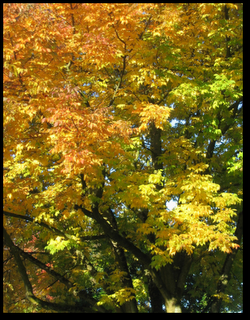
ummer into winter. With the leaves turning from green to orange/Brown Autumn is also the season which most crops are harvested. It is also the season where days get shorter and shorter, every day the sun sets 2minutess earlier than the day before.
Autumn's is associated with the transition from warm to cold weather. Most ancient cultures celebrate the harvest during Autumn, often the most important on their calendars. Thanksgiving holiday of the United States, the Jewish Sukkot holiday with its roots as a full moon harvest festival of "tabernacles" (huts wherein the harvest was processed and which later gained religious significance), the many North American Indian festivals tied to harvest of autumnally ripe foods gathered in the wild, the Chinese Mid-Autumn or Moon festival, and many others. The frequent mood of these autumnal celebrations is a thankfulness for the fruits andvegetabless. Remembrance of ancestors is also a common theme.
WhatÂs the weather like over in good old England
The WeatherÂs been good for November 2006, ItÂs been warm with bright spells weÂve actually had a warm couple of months. Contrary to popular belief, it DOES NOT rain every day in England! However, it is always advisable to bring some type of waterproof clothing and keep yourself psychologically prepared!
The highest monthly total of sunshine on record is 384 hours in Eastbourne and Hastings, Sussex, in July 1911.
What does a ripe fallen conker look like?The horse chestnut is a tall, dome shaped tree with grey-brown flakey bark. The leaves have five or more long leaflets and turn from orange to
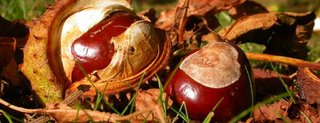
scarlet in autumn. The big mahogany-brown conkers burst from a spikey green fruit.
Where/when am I likely to see it?
Common in parks, gardens, streets and village greens. Look for and record falling ripe fruit from September to October.
What does a ripe blackberries look like?Blackberries are the fruits of the bramble. Brambles are a fast growing thorny scrambling shrub. The berries are black, soft and juicy when ripe.
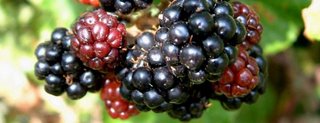
Where/when am I likely to see one?Most blackberries ripen in August and early September but you may see them from as early as July. Brambles are common in woodland, hedges, scrub and wasteland.
Got to get back to work IÂll let you know how the weather is over the next couple of weeks.
Christmas in Germany...
www.
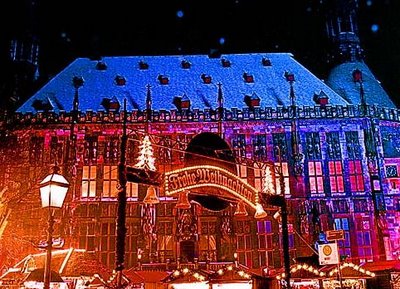 I can’t believe it, I am writing about Christmas – and it’s only November… but it has to be done :o)
I can’t believe it, I am writing about Christmas – and it’s only November… but it has to be done :o)
Christmas in Germany
Have you ever thought about travelling to Germany during the festive period to spend an unforgettable Christmas in Germany? If you haven't, maybe you should.
One of the best attractions has to be the Christmas markets to be found in almost every German city. They range in size from just a few stalls in the smaller cities to the sprawling markets in major cities where you can spend hours searching for gifts. The bigger ones can be compared with fun fairs, because they have many attractions for everybody including rides for the kids and "Glühwein" (mulled wine) for the adults. Every year the locals turn out in their masses and people travel from all over the world to experience a truly magical festive experience.
The first ever Christmas market was held in Dresden in 1434, when the duke allowed the first market to take place the day before Christmas Eve, where people were able to buy all their Christmas presents and food. Over the years artisans joined the market and it has also been used by poor people trying to earn some money with their home-made handicrafts. 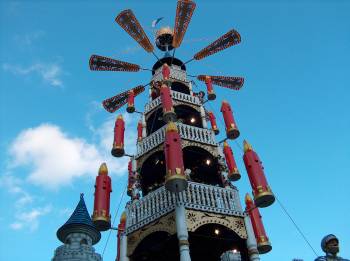
In 1471, the city of Dresden handed out "Stollen" (a special cake eaten in Germany in the days leading up to Christmas) to the poor people. This was the beginning of a tradition which even now is still a major feature for every Christmas market, Stollen and Glühwein……….yummmm!
If you don’t have any free time then you should make it. The weeks before Christmas are so hectic and what better way to take some time out than 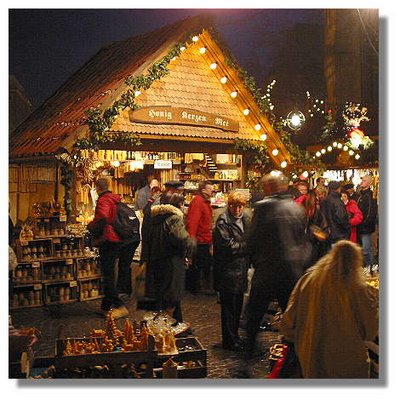 walking to the nearest market, going to a "Glühwein" booth and watching the people passing by while enjoying the warmth of sipping your Glühwein. Everyone you see has the same expression of happiness and excitement on their winter chilled rosy faces.
walking to the nearest market, going to a "Glühwein" booth and watching the people passing by while enjoying the warmth of sipping your Glühwein. Everyone you see has the same expression of happiness and excitement on their winter chilled rosy faces.
The market I love the most has to be the "Christkindlesmarkt" in Nuremberg, which is probably the most famous in the world!
Check out this link:
http://www.bestvaluetours.co.uk/christmas-markets-germany-sightseeing-tour-tfl.htm
London World Travel Market
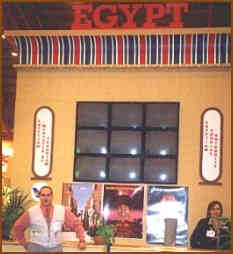
Well it's been a busy week this week here at 'Astral Towers' (as we like to call the office) for everyone. Besides dealing with our normal work load of processing bookings and arranging private tours and transport for clients - all of us had also had at least one day out of the office at the World Travel Market which was taking place a the ExCel Centre Docklands this week. The World Travel Market is one of the worlds largest travel trade shows in the world - most countries in the world are represented and send out thier top sales people add to this - major attractions and the other 'big names' such as airlines and hotel chains are also pitching products and services and you really do have a huge show. One the first couple days of the show the buyers from industry turn up to negotiate rates for services for the following season so there is a lot of stress involved during the day and hence a lot of parties in the evening.

We normally use the the WTM as a place to touch base with our current suppliers and also see some of our overseas agents who are in town. It's also a good place to take new memebers of staff - they get to see another aspect of the travel trade and experience the buzz that goes with big business.
Well must get back to work - i'm sure you'll hear more from the rest of the office crew about the show next week.
Take care
Michael
Guy Fawkes Night
Hello everyone Dan's back,
Guy Fawkes night or bonfire/fireworks night as it is also known as, where the sky’s light up with some spectacular fire works displays and bonfires, that are as high as you can see. There is an annual competition on who has made the best Guy Fawkes out of rag-bag of old clothes and newspaper customarily burnt atop a bonfire. The tradition started in 1606. It’s a great night to spend outdoors rapped up with a cup of hot chocolate and a hot dog.
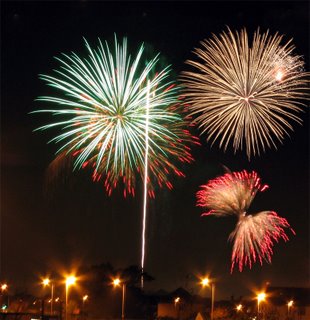
On 5th November bonfires and fireworks will be going off everywhere as Britain
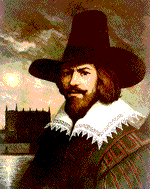
remembers its most infamous traitor - Guy Fawkes, the Gunpowder Plot conspirator caught red-handed in the House of Lords cellar in 1605 while about to blow up Parliament and the king in order to rid the country of its Protestant rulers and restore the Catholic faith.
Fact: Until 1959, it was illegal not to celebrate the date of Guy Fawkes arrest in England...

However, in earlier centuries children were allowed free rein at this time as the night before Guy Fawkes' Night was known as Mischief Night, when groups of young children roamed their neighbourhood looking for mischief and playing pranks. Children would also blacken their faces as Guy Fawkes might have done when he waited to blow up Parliament. Mischief Night is these days no more, although such vandalism and harassment might now be recognised as an everyday occurrence.
The first official Guy Fawkes' Night bonfire was lit on the night of the Gunpowder Plot on 5 November 1605,
Beautiful Oxford…
I thought I would give you a little break this week, so I won’t say anything about Germany today… ;o)
Since I lived in Oxford for a while, I thought I would tell you a bit more about this amazing city!
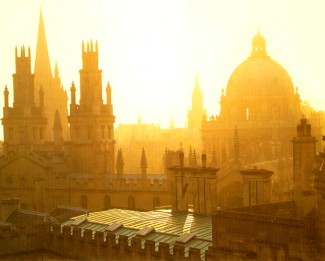
Oxford has so many secrets, beautiful buildings and places of interest, that it is simply a pleasure to walk around and absorb it all.
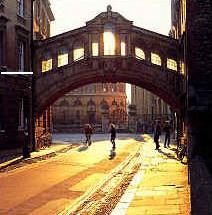
Oxford city centre is compacted into little more than a few dozen roads. It is a labyrinth of shops, colleges, pubs, restaurants and many other attractions. Not surprisingly then, during the tourist season, Oxford becomes extremely busy with visitors from all over the world!
There are towers to climb, theatres to visit, galleries to see, colleges to explore as well as parks and gardens to sit and watch the world go by…
There is, perhaps surprisingly, an almost guarded discretion to many of the places of interest here. Without a guide and some insider knowledge, many of Oxford’s best features could go unnoticed by someone new to the city. College students and locals (and it happened to me on numerous occasions), are asked on a daily basis by tourists: “Where is the university?”… 
If you know a little bit about Oxford and its history, this question always brings a smile to your face.
The University of Oxford:
The University of Oxford was founded in the 12th century and therefore constitutes the oldest English-speaking University. Oxford, like Cambridge, differs from many other universities because there is no 'campus' as such and no central university building. Instead, the University consists of 39 separate colleges, located in and around Oxford city centre.
Each college has its own individual character, some date from the 13th century and others are only a few decades old. Some are tiny and can be easily missed, whereas others are deceptively large in size, containing parks and vast gardens within their grounds as the Christchurch College has.

Another magnificent college, and my personal favourite, is Magdalen (pronounced 'maudlin'). It stands next to the River Cherwell and has a deer park within its grounds. Impressive!!!
Another experience, which visitors to Oxford will love, and somewhere I have spent many hours drinking coffee and undergoing some retail therapy:
“The Covered Market”
Located in central Oxford, this is a historic market with permanent stalls and shops in a large covered structure.
It is a delightfully intriguing place to wander around. There are lots of small shops and cafes, and the products on offer are all of 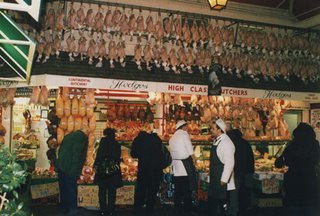 excellent quality. The shops sell everything from clothes and fresh pasta to books and boots. You'll find butcher's shops alongside souvenir shops and greengrocers. And after all that shopping there are plenty of small cafes where you can relax and soak up the atmosphere and watch the cake shop creating their next masterpiece!
excellent quality. The shops sell everything from clothes and fresh pasta to books and boots. You'll find butcher's shops alongside souvenir shops and greengrocers. And after all that shopping there are plenty of small cafes where you can relax and soak up the atmosphere and watch the cake shop creating their next masterpiece!
That's it from me for today. Should you like the idea of visiting this beautiful city, you might want to have a look here:http://www.astraltravels.co.uk/uk-london-tours/cotswolds_oxford_tour.htm
http://www.astraltravels.co.uk/uk-london-tours/shakespeares_stratford_tour.htm
 As winter descends upon London, seasonal spirit simply sweeps the streets. Come the end of November red-cheeked shoppers and carol singers fill the streets. To celebrate, London will be overcome by a welcome array of festive activities and fun. You can sample a great British tradition and catch a classic pantomime or hit the West End and take in a show. Christmas classics like The Nutcracker and The Snowman will once again be lighting up the London stage.
As winter descends upon London, seasonal spirit simply sweeps the streets. Come the end of November red-cheeked shoppers and carol singers fill the streets. To celebrate, London will be overcome by a welcome array of festive activities and fun. You can sample a great British tradition and catch a classic pantomime or hit the West End and take in a show. Christmas classics like The Nutcracker and The Snowman will once again be lighting up the London stage. It's nice to have a base from which to make the most of our festive capital. Why not book yourself into a hotel? Please click on the link below for a number of hotels in London.
It's nice to have a base from which to make the most of our festive capital. Why not book yourself into a hotel? Please click on the link below for a number of hotels in London.





















